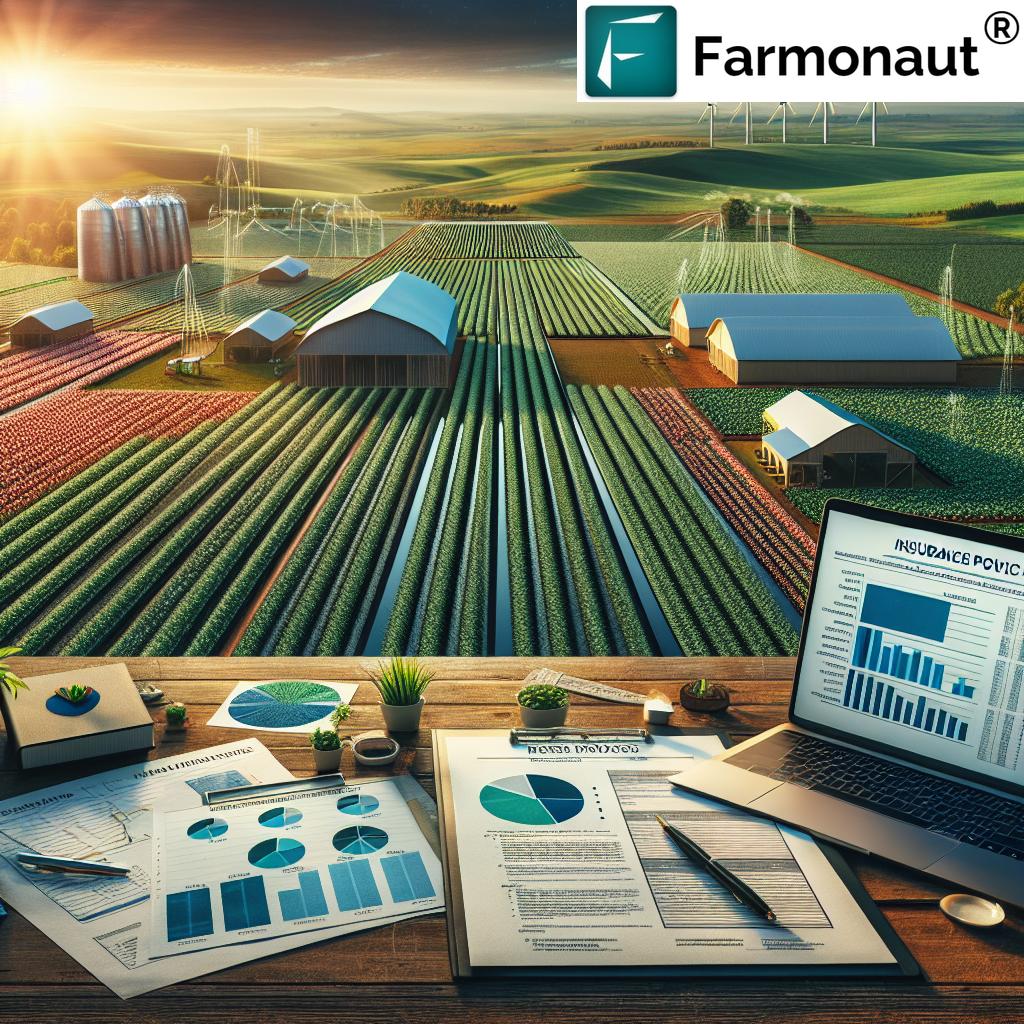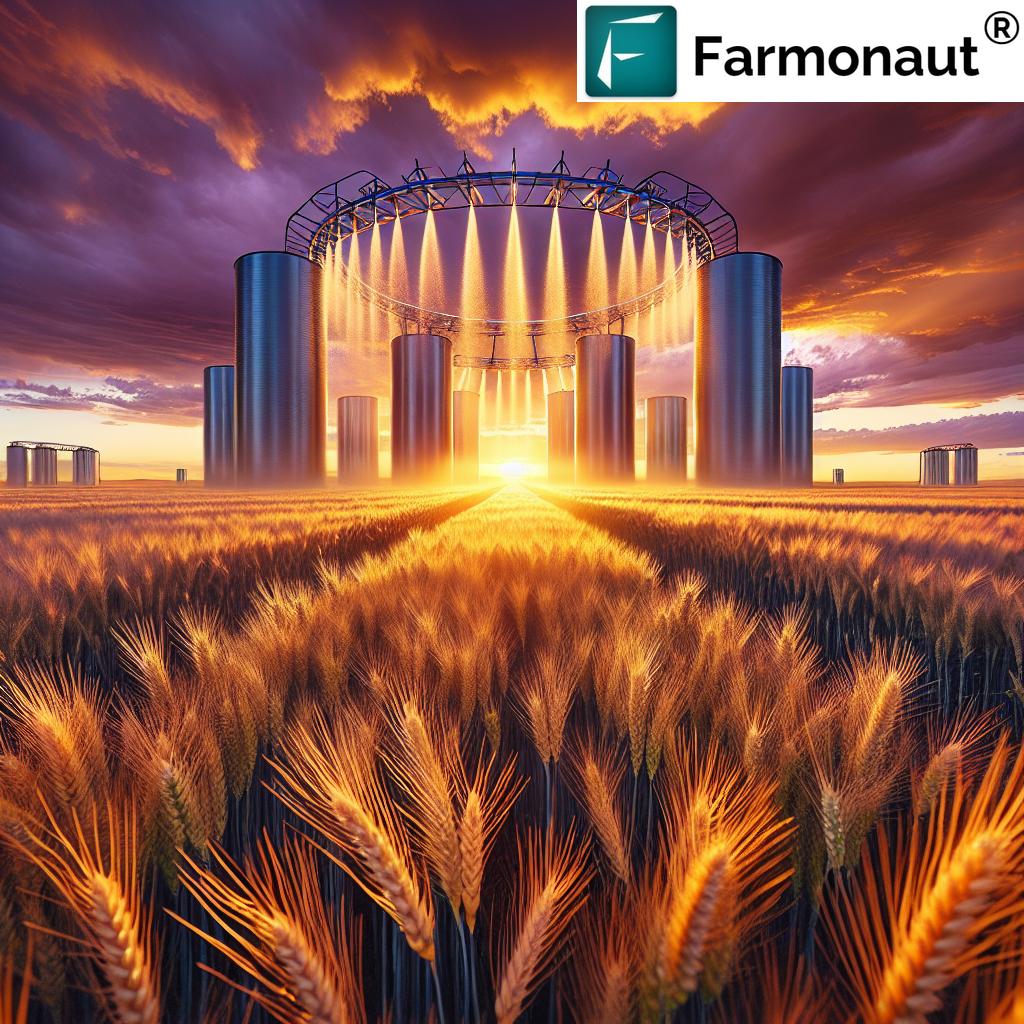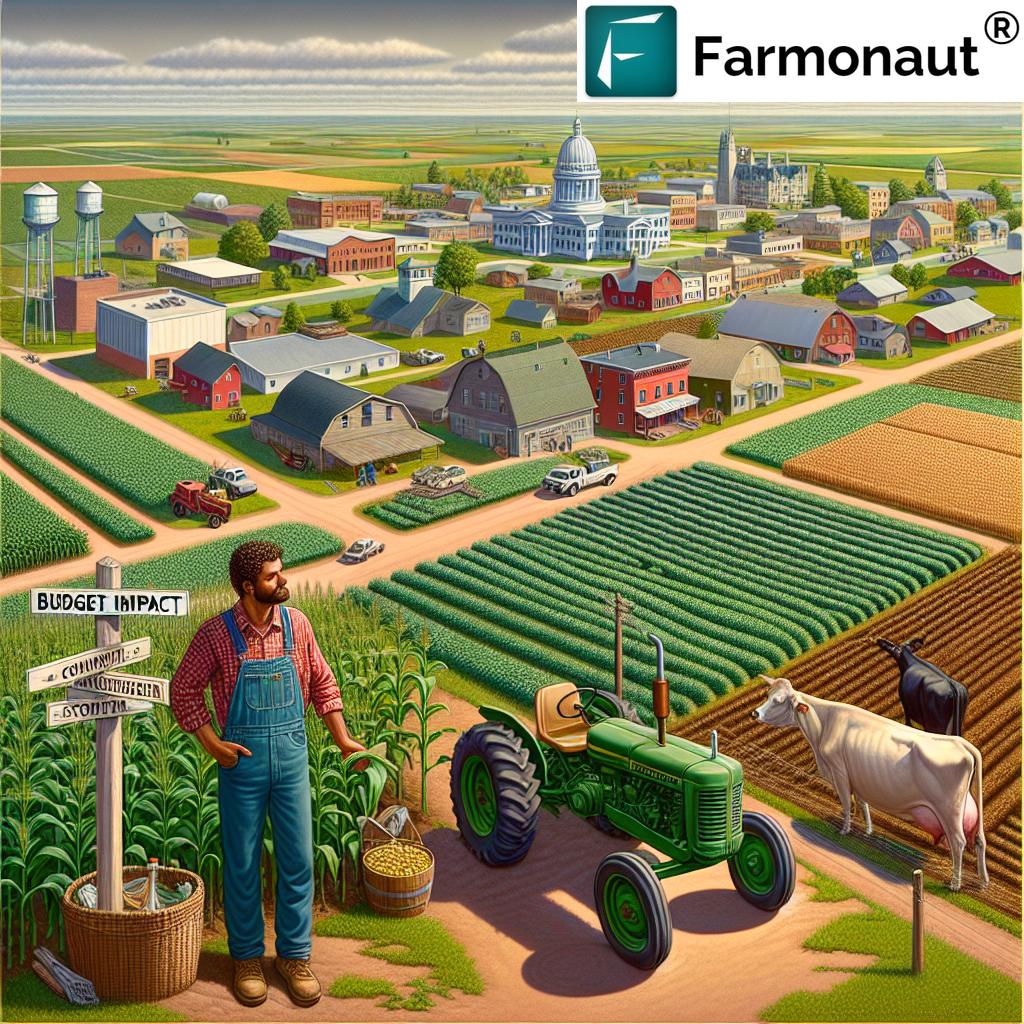BLM Land Washington: Top 2026 Farming Trends & Tips
BLM land Washington has become a cornerstone for sustainable agriculture throughout the Pacific Northwest, playing a crucial role in nurturing innovation, protecting native species like the Washington hawthorn and supporting specialty crops through effective land management. In 2026 and beyond, Washington’s diverse agricultural and forestry sectors benefit significantly from strategic initiatives and modern practices—including the use of advanced fruit washing machines, the integration of native plants, and strong community-market connections. This blog will explore top farming trends and essential tips for making the most of Washington’s Bureau of Land Management (BLM) properties for a prosperous, sustainable future.
Whether you are a farmer, conservationist, technology enthusiast, or a concerned consumer, this guide brings you comprehensive insights into how BLM land in Washington State is setting new benchmarks for ecological stewardship, productive agriculture, and thriving local markets.
BLM Land Washington State: An Asset for Sustainable Agriculture and Forestry
The Bureau of Land Management (BLM) oversees millions of acres across Washington State—spanning rangelands, forested areas, marginal agricultural lands, and zones adjacent to thriving farming regions. These lands act as critical resources for fostering sustainable agriculture, forestry, restoration projects, and limited activities that respect the ecological balance of this vibrant region.
- Key Functions:
- Managed grazing to maintain pasture health and soil quality
- Selective timber harvesting for regenerative forestry
- Ecological restoration projects enhancing biodiversity
- Facilitation of integrated landscape management across adjacent farming zones
- Strategic Importance:
- Blends natural resource conservation with productive land use
- Supports local economies through sustainable practices
- Provides critical habitat for native species like the Washington hawthorn
Top 2026 Sustainable Farming Trends on BLM Land Washington
As we move into 2026, BLM land in Washington exemplifies eco-friendly and innovative farming trends that support both productivity and stewardship. Recent advances and best practices include:
- Integration of Native and Adaptable Species: Promoting plants such as Washingtonia palm and Washington hawthorn for ecological balance and economic opportunities.
- Advanced Fruit Washing Technology: Adopting efficient fruit washing machines that improve produce quality and processing safety, especially near BLM lands.
- Soil Health & Regenerative Agriculture: Focused on organic amendments, reduced tillage, and carbon sequestration techniques.
- Enhanced Local Market Connections: Via community-centric hubs like the Washington Park Farmers Market.
- Integrated Resource Management: Leveraging real-time insights through satellite technology and AI-powered advisory systems.
Why These Trends Matter
- Sustainable farming practices are essential in maintaining BLM land Washington for future generations while increasing economic output.
- The inclusion of native species fortifies local ecosystems.
- Innovative washing technology significantly benefits food safety and compliance with organic/market standards.
- Community markets help connect growers and consumers, increasing income diversification for farmers operating near BLM managed acres.
Native and Adaptable Species: Washingtonia Palm & Washington Hawthorn in Sustainable Landscaping
The choice of species is key in agroforestry and landscape restoration—balancing productivity with environmental protection:
Washingtonia Palm on Washington BLM Lands
While not originally native to the Pacific Northwest, the Washingtonia palm (native to the southwestern U.S.) has found its place as an ornamental in urban and peri-urban agriculture landscaping. Characteristics that make it suitable include:
- Tolerance to a wide range of climate conditions, including mild microclimates found in some urban areas across Washington.
- Contributes shade, visual diversity, and aesthetic value without intensive watering, aligning well with sustainable landscaping goals.
- Limited use in urban farming zones and city parks where water conservation is prized.
Role of Washington Palms in Urban Sustainability
- Urban farm and park settings benefit from increased biodiversity and heat mitigation—important considerations in climate-adaptive city planning.
- Washingtonia palms offer a niche solution for aesthetic and functional landscaping around orchard boundaries, farmers markets, and community gardens.
Washington Hawthorn: A Native Powerhouse (Crataegus phaenopyrum)
Washington hawthorn is a resilient, adaptive native species that is highly valued for applications on BLM land Washington state and nearby marginal soils:
- Windbreaks & Wildlife Habitat: Dense branching offers excellent shelter for birds and beneficial insects.
- Soil Stabilization: Deep root systems help reclaim and restore marginal lands and rangelands affected by erosion or agricultural use.
- Specialty Fruits: Hawthorn berries are gaining traction among local growers for niche organic produce and value-added health food products.
- Biodiversity: Supports pollinators and enhances the natural resilience of the agricultural landscape.
Integrating these species into forested areas, parklands, and restoration projects aligns with both economic goals and ecological restoration efforts spearheaded by Washington’s BLM, paving the way for a healthier, more productive landscape.
Strengthening Local Markets: Washington Park Farmers Market & Community Impact
Local markets like the Washington Park Farmers Market exemplify the thriving farm-to-table ecosystem. In 2026, these markets do more than connect producers with consumers—they are vibrant educational and innovation hubs supporting:
- Direct sales of specialty fruits (hawthorn berries, unique local and exotic species like Washingtonia palms), maximizing growers’ profits.
- Opportunities for growers near BLM-managed lands to expand their product range and improve income diversification.
- Demonstrations of innovative agricultural technology, such as fruit washing machines and smart farm monitoring systems.
- Community education on sustainable farming, food safety, and ecosystem preservation.
With consumers in Washington increasingly interested in provenance, health, and environmental impact, local markets have evolved into central platforms for sharing knowledge, inspiring sustainable agriculture, and showcasing BLM’s role in landscape-level conservation.
Innovative Fruit Washing Machine Technology: Key to Post-Harvest Quality
The fruit washing machine is revolutionizing post-harvest handling on farms, especially those operating adjacent to or within BLM land Washington. This technology ensures fresh produce reaches markets in top condition while aligning with sustainability standards.
Fruit Washing Machine Benefits
- Removes soil, pesticides, and microbial contaminants, protecting both consumers and farmers’ reputations.
- Reduces post-harvest loss by extending produce shelf life and preventing spoilage during storage and transport.
- Facilitates organic certification—a growing demand among local markets—as efficient washing minimizes chemical residues.
- Increases operational efficiency: BLM farms in Washington are reporting up to 35% greater processing effectiveness for native produce.
- Compliance with food safety standards for both domestic and international markets.
How Technology Enhances the Value Chain
The integration of fruit washing machinery at local cooperatives and major aggregation points near farmers markets ensures that consumers always receive fresh, safe produce. This tech-driven approach:
- Reduces food waste at every step from field to fork
- Supports local economies by increasing the reliability of supply chains
- Facilitates traceability—a core element for modern markets
To fully manage quality and traceability for high-value crops, Farmonaut’s Blockchain Product Traceability Solution is highly recommended. It enables reliable end-to-end tracking for native and specialty produce—inspiring consumer trust and assisting in regulatory compliance.
How Farmonaut Supports Sustainable Farming on BLM Land Washington
As we look to the future of BLM land management and sustainable agriculture in Washington, we at Farmonaut are committed to enabling actionable insights and affordable remote monitoring for landowners, growers, and agencies overseeing land stewardship.
- Satellite-Based Monitoring: We offer real-time data on vegetation health, soil conditions, water use, and more—empowering informed decision-making for all lands under management.
- AI-Based Advisory (Jeevn AI): Through Jeevn AI, users get timely recommendations tailored to local farming conditions, ensuring best practices for productivity and sustainability.
- Resource & Fleet Management: Our solutions assist users in planning operations efficiently, tracking equipment, vehicles, and staff across large and diverse acreage. Explore Farmonaut Fleet Management for streamlined agricultural logistics.
- Environmental Impact Tracking: With Farmonaut’s Carbon Footprinting Tools, farms, agencies, and businesses can measure and reduce emissions, supporting Washington’s leadership in sustainable agriculture and forestry.
- Financing Assistance: Our technology facilitates satellite-based verification for crop loans and insurance in Washington, reducing fraud and expanding access to essential funding for local growers.
- Scalability: With solutions deployable via API and mobile/web platforms, every operation—from smallholders to government agencies—can leverage satellite intelligence via the Farmonaut API and API Developer Docs.
Powerful Agricultural Technology for 2026 and Beyond
By integrating satellite monitoring, AI-driven advisory, traceability, carbon tracking and resource management, we help usher in a new era of sustainable farming on BLM land Washington. The digital transformation supports land managers, farmers, and ecosystem restoration projects throughout the state.
Sustainable Farming Trends on BLM Land Washington 2026: Comparative Table
| Trend/Practice | Estimated Adoption Rate (%) | Environmental Benefit | Relevant Technologies/Tools |
|---|---|---|---|
| Native Species Replanting (e.g., Washington hawthorn) | 58% | Strengthens biodiversity and stabilizes soil | Local nursery programs, carbon footprint monitoring, satellite vegetation tracking |
| Use of Innovative Fruit Washing Machines | 42% | Reduces contamination, enables organic certification | Post-harvest processing technology; blockchain traceability (learn more) |
| Soil Health Practices | 67% | Boosts productivity, increases climate resilience | Soil sensors, AI-driven advisory systems (Farmonaut Agro-Admin App) |
| Local Market Partnerships (Washington Park Farmers Market) | 73% | Reduces food-miles, increases local income, cultural preservation | Community hub technology, fleet management tools |
| Satellite & AI-Driven Farm Monitoring | 54% | Resource efficiency, reduces input waste | Real-time monitoring, Jeevn AI (get started) |
Farmonaut Subscriptions: Affordable Satellite Technology for Every Farmer
We offer a range of subscription plans, empowering farmers, businesses, and agencies with cost-effective, scalable access to advanced satellite and AI-based solutions for land monitoring, resource optimization, and traceability. Choose the plan that best suits your operation and scale efficiently as your needs grow in 2026 and beyond.
FAQ: BLM Land Washington & 2026 Sustainable Farming
What makes BLM land in Washington a key asset for sustainable agriculture?
BLM land Washington encompasses millions of acres ideal for managed grazing, selective timber harvesting, and restoration—helping to maintain biodiversity and watershed health. Its strategic location adjacent to agriculture-rich zones enables integrated resource conservation while boosting local economies.
Why are native and adaptable species emphasized on BLM land?
Native species like Washington hawthorn are crucial for stabilizing soil, enhancing wildlife habitat, and supporting biodiversity. Adaptable species such as Washingtonia palm in niche landscaping situations contribute ecosystem services with minimal water and input needs.
How do fruit washing machines improve food safety and market access?
Fruit washing machines efficiently remove contaminants from produce, ensure compliance with food safety regulations, and facilitate organic certification. They also reduce post-harvest loss and improve overall produce quality for both local and export markets.
What is Farmonaut’s role in supporting Washington’s sustainable agriculture?
We provide satellite-based monitoring, Jeevn AI advisory, resource management, blockchain traceability, and environmental impact tracking. Our tools support informed decisions on BLM lands, optimize operations, and enhance accountability across the entire agricultural value chain.
How can local farmers benefit from the Washington Park Farmers Market?
Washington Park Farmers Market offers a direct-to-consumer sales platform for specialty fruits—including native and exotic crops—improves community engagement, offers educational opportunities, and supports innovation through market-based demonstrations of new technologies.
What technology can help track sustainability efforts on BLM land Washington?
Solutions like Farmonaut’s carbon footprinting, blockchain traceability, and AI-based advisory systems enable precise, real-time tracking and reporting on sustainability initiatives, regulatory compliance, and operational impacts.
Conclusion: Future of Sustainable Agriculture on BLM Land Washington
The intersection of BLM land Washington, community-driven solutions like Washington Park Farmers Market, and advanced technology—such as fruit washing machines, traceable supply chains, and satellite-driven data—sets Washington State apart as a model for sustainable agricultural and forestry development well into 2026 and beyond.
- Native species and adaptive plants secure ecological balance, soil health, and wildlife sustainability.
- Technological innovation enhances food safety, reduces waste, and empowers local communities.
- Community markets bridge the gap between farmers and consumers, promoting transparency, education, and local prosperity.
- Satellites, AI, and traceability platforms empower all stakeholders with actionable insights and accountability.
By embracing these trends, leveraging BLM land’s unique resources, and fostering a commitment to technological advancement, Washington can continue to lead the nation in sustainable agriculture, resilient forestry, and climate-smart rural development.













